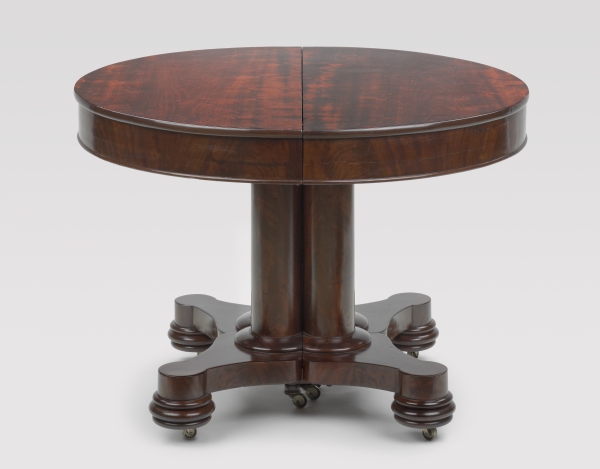· 18 ·
Boston Furnituremakers and the New Social Media, 1830–1860
KELLY HAYS
In the middle third of the nineteenth century—after the federal period and before the Civil War—American furniture history, as described in many decorative arts publications, becomes fairly dreary. Most authors who have addressed this period have focused on either the rise of the factory system and cheap manufactured goods or the proliferation of “Victorian” revivals and their awkward reinterpretations of past styles. Evolution in technology and labor practices and an abundance of eclectic revival styles are, without doubt, important aspects of American furniture in the period 1830 to 1860.1 However, another significant development in this period deserves clarification and study: how furnituremakers adapted to and took advantage of new social media. Changes in the social and economic environment outside the workshop were equally as important as changes within.
Unlike in earlier periods, the furniture trade was no longer predominantly local, made up of face-to-face transactions between makers and their customers. In the federal period, furnituremakers adapted to a changing market in the postrevolutionary economy by becoming increasingly entrepreneurial; they used more sophisticated marks and labels to advertise their work and develop a recognizable brand identity.2 Although makers continued to communicate directly with the public through local advertising and labeling, from the 1830s onward consumers’ knowledge of furnituremakers and shoppers’ taste for new products and styles became increasingly mediated through third-party sources—popular magazines, domestic advice books, exhibitions, and conversations among friends and peers about these ideas and experiences.
These forms of social media proliferated as a result of technological advances in printing and transportation and thus were shared and experienced by large national audiences. Tom Standage has recently observed that social media are not dependent on particular technology but represent “an environment in which people can publish, discuss, recommend and share items of interest within a group of friends and associates, passing noteworthy items from one social circle to another.”3 In the 1830–60 period, furnituremakers navigated a new market environment shaped by leading tastemakers who influenced popular discourse and by customers whose aspirations for furnishing their homes were informed by a range of sources: short stories read aloud from Godey’s Lady’s Book, or the advice of the critic and architect Andrew Jackson Downing, or visits with friends and family to the vast displays at mechanical fairs and trade exhibitions. As these diffuse, indirect means of communication increasingly influenced consumer preferences, furnituremakers seemed to adapt their products and marketing techniques to attract customers who relied on social media for information.
This essay does not attempt to make a case for the aesthetic merits of the so-called early Victorian era. This period is in some ways the dowdy older sister to the winsome styles of the later nineteenth century: the aesthetic movement, the American Renaissance, and the arts and crafts movement, all of which have devoted followings of scholars, curators, and collectors. In the popular imagination, the history of the antebellum period is captured in the phrase Manifest Destiny, while the objects that signify the era—sprung-seat upholstered parlor chairs, wobbly marble-topped pedestal tables, and odd patent convertible furniture—are viewed as the stuff of dusty second-rate antiques shops. Through a different lens, one may see in these objects the quirkiness and inventiveness of the designs, as well as the earnest desire of their makers and users for improvement, progress, and innovation. The sense of limitless possibility that fueled the ideals of Manifest Destiny and westward expansion also can be found in the relentless efforts by American manufacturers and consumers to discover, discuss, and promote the newest, most advanced, most convenient products for the home.
Boston and its surrounding region was a major center for this eager innovation in consumer goods, and not only in furniture. Although New York, with its booming population, became the great nineteenth-century metropolis, many Boston entrepreneurs led the way in shifting to new kinds of manufacturing and marketing in response to changing consumer tastes. For example, among the first and most successful firms in the nation to make and market pressed glass was the Boston and Sandwich Glass Company, incorporated in 1826 by Deming Jarves. The company perfected a new labor-saving technology that used a mechanical plunger to press glass into detailed metal molds. Where cut glass required painstaking work by highly skilled artisans, a pair of unskilled laborers working a pressing machine could produce a piece of glass every few seconds. The technology allowed for rapid design changes to keep up with consumer tastes; the molds could be readily swapped out to introduce new patterns, and the same pattern could be made in a range of colors (fig. 1).
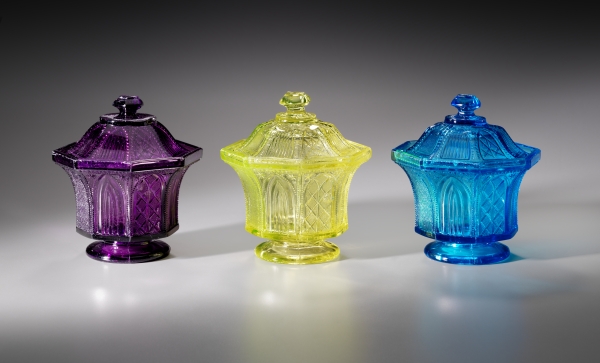
FIG. 1. Three sugar bowls with covers, Boston and Sandwich Glass Company (1826–88), Sandwich, Mass., 1830–50. Pressed glass; h (average) 5⅜. Museum of Fine Arts, Boston; Gift of Kenneth and Mary Jane Wakefield in memory of Ruth Graves Wakefield (1979.673; 1979.716a-b; 1979.667).
Similarly, Roswell Gleason, a pewterer and silver-plate manufacturer in Dorchester, Massachusetts (now a neighborhood of Boston), quickly adopted new materials and labor-saving technologies, along with stylish designs, to appeal to consumers’ taste for originality. With his sons, Gleason developed one of the first silver-plating manufactories in the United States and eventually ran a factory with more than one hundred employees. The Gleason Magic Caster (fig. 2) was an especially elaborate product that Roswell Gleason and Sons patented in 1857. Its function was mundane; by the 1850s, many manufacturers produced caster stands to hold bottles of condiments such as salt, pepper, sugar, oil, vinegar, and mustard. The Magic Caster, however, offered consumers a clever device that appealed to the love of new “mechanized” technologies and complicated dining accoutrements. With a twist of a knob—presto!—the caster’s six revolving doors opened all at once to reveal six glass bottles. An English acquaintance of Gleason, upon showing a Magic Caster to his family, wrote in 1856 that “the Patent Castor in England would be a very saleable article; the extreme neatness and usefulness, combined with its novelty & elegance, would command much attention.”4 It is precisely this combination of usefulness and novelty that appealed to consumers in this period.
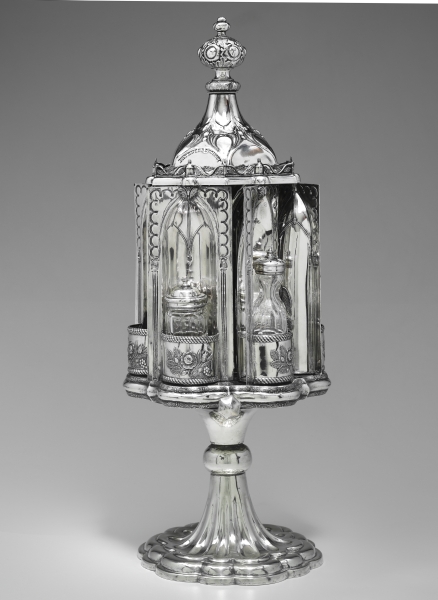
FIG. 2. Cruet holder or “Magic Caster,” Roswell Gleason and Sons (active 1851–71), Roswell Gleason (1799–1887), Dorchester, Mass., 1857–71. Silver plate and cut glass; h 22, w 8¾, d 8¾. Museum of Fine Arts, Boston; Marion E. Davis Fund (1984.0023).
How did consumers learn about products like Gleason’s Magic Caster or up-to-date furniture designs? How did they share social customs and meanings through changing tastes in household decoration? One of the most significant developments in social media of this period was the publishing revolution, in which improved printing technologies and reduced mailing costs allowed for the mass circulation of inexpensive books and periodicals. Like the more recent development of cellular phones and smartphones, in which a new communications tool became less expensive and more universal in a short time, subscription and circulation rates for magazines grew rapidly in the mid-nineteenth century. Illustrated magazines such as Godey’s Lady’s Book, Ballou’s Pictorial, Frank Leslie’s Illustrated Newspaper, and a host of others took advantage of innovations in mass-producing printed images, especially steel-plate engraving and lithographs. Unlike pattern books commonly used by craftsmen, these publications put thousands of images of furnishings and household goods directly in the hands of middle-class consumers. Particularly influential in shaping tastes was Godey’s Lady’s Book, first published in 1830 and edited by the writer and cultural activist Sarah Josepha Hale. The magazine’s circulation reached 150,000 households by 1860, but issues were shared and circulated among families and friends, making its influence wider than its subscription numbers suggest. Its well-known plates illustrating clothing and interiors, many of them richly hand-colored, helped nationalize manners and cultural ideals in fashion and furnishing (fig. 3).
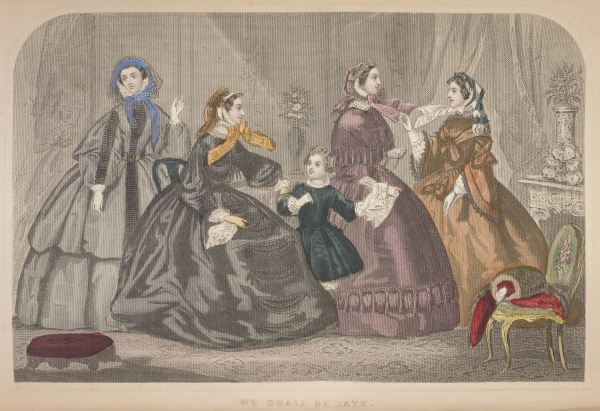
FIG. 3. “We Shall Be Late.” From Godey’s Lady’s Book and Magazine 58 (October 1859): 383. Winterthur Library; Printed Books and Periodicals Collection.
Along with handsome illustrations, the magazine’s articles and fiction clearly conveyed the social meanings of interior decoration and furniture. For example, in a short story titled “Any Time” published in 1854, information about furniture styles is conveyed not only as a description of the latest fashion but also as a cautionary tale about how furniture could be used to mark social status. Mrs. Morton, a fashionable urban lady, writes to her country friend, Anne: “I have been so busy all the week choosing furniture, or I should have written before. I am going to have oak and green in the dining-room—that is all the style, you know—rosewood and crimson brocatelle in one parlor and gold color in the other,” a description as vivid as a fashion plate. When Anne comes for a visit, she is distraught to find that Mrs. Morton has dropped her friendship for new, more fashionable acquaintances. The story describes how Anne “had thrown herself on the bed, face downwards, on first being shown to her room, which she now found was NOT the famous blue room, with its rosewood furniture, whose occupancy had been so often offered to her, but a much plainer apartment, probably the second or third-best chamber.”5 The friend’s snub is conveyed deliberately through furniture—the implication being that readers would understand a room’s furnishings as an obvious tool for social communication.
In addition to using literature to express shared cultural ideals surrounding furniture and social mores, Godey’s responded to readers’ demand for home-furnishing advice and directions. Consumers moving westward to remote areas had limited access to furniture producers, or perhaps they preferred to keep up with urban fashions rather than seeking the advice and goods of local craftsmen. In an article titled “New Furniture,” the editors wrote, “We have been frequently requested to give a notice of new furniture, for the benefit of those at a distance from cities, who wish to send orders.” Advising on the parlor, the authors describe a set of new furniture much like an example with Boston origins (figs. 4, 5) that is now in the collection of the Museum of Fine Arts, Boston: “The sofas and ordinary chairs are covered with satin damask. . . . The frames of rosewood, delicately carved, and of the highest polish. One of the prettiest patterns represents clusters of small and large roses, every petal being distinct.”6 By offering such detailed descriptions of stylish products, Godey’s editors became essential guides and interpreters for customers too distant from urban centers to visit the shops and showrooms of furnituremakers in person.
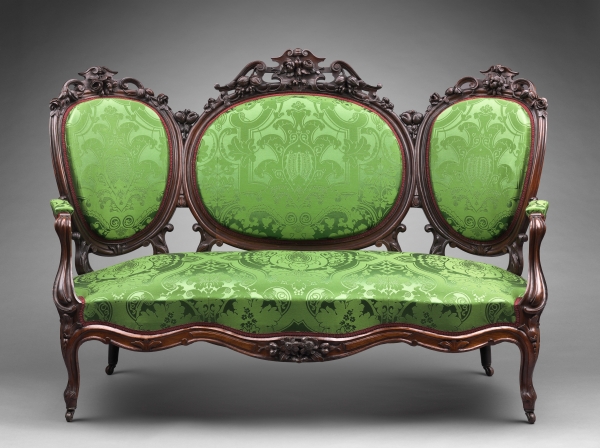
FIG. 4. Sofa, probably Boston, 1850–70. Rosewood; h 42½, w 63½, d 31. Museum of Fine Arts, Boston; Gift of John Fenn Brill (1982.479).
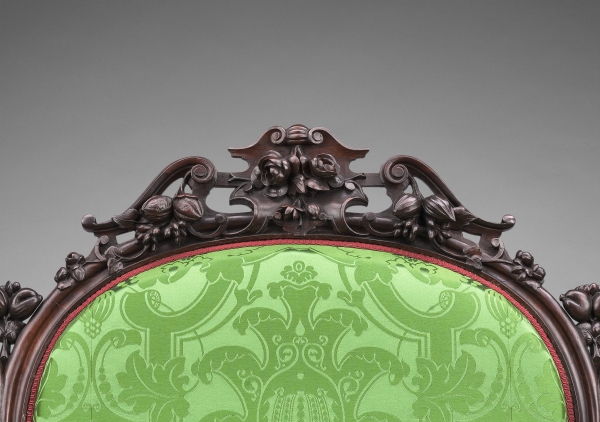
FIG. 5. Crest rail of the sofa in fig. 4.
The editors not only commented on nuances in style and decoration but also gave clear instructions on how to use new and unfamiliar forms of furniture. In particular, they translated for the American consumer a variety of French terms used by furnituremakers, including “tête-a-têtes (sofas),” “bibliothèques (bookcases),” and fanciful words such as “toilettinettes (ladies’ toilet tables).” The author of the 1850 article admitted that such fripperies might “cause divers [sic] groans from ‘honest country folk’” but nevertheless carefully described the form and function of furniture novelties: “And now we come to the étagère, or ‘what not,’ as this article of furniture is usually denominated. The real name comes from the étage, a story, or division, and thus the range of shelves . . . has received its title.” The article goes on to explain that plain ones might be used in a sitting room or nursery, but that more elegant examples were “intended only for the parlor. A drawer for engravings, etc., is attached to the central shelf, which is, in some cases, a slab of marble. . . . Elegantly bound books, and bijouterie, fill the different stories.”7 An étagère labeled by the Boston manufacturer and retailer George Croome is displayed in the parlor of the Roswell Gleason house period rooms at the Museum of Fine Arts, Boston, dressed in finery as described in Godey’s (fig. 6).
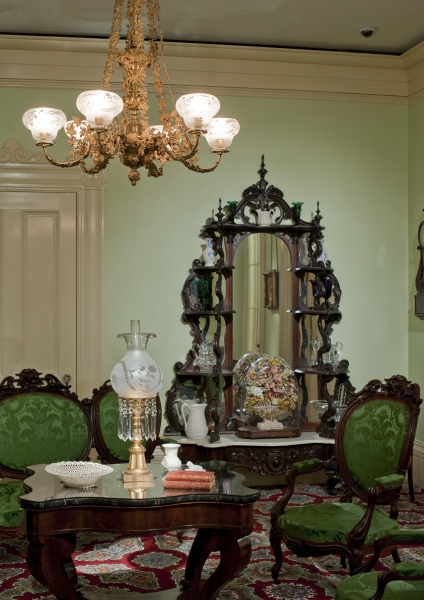
FIG. 6. The étagère in fig. 7 as displayed in the parlor of the Roswell Gleason period rooms in 2010. Museum of Fine Arts, Boston; The Heide Family Galleries.
This étagère is labeled by George Croome, who was born in England and became successful in the Boston furniture trade from 1835 to 1877; the address on the label dates it to about 1861–65 (fig. 7).8 Elaborate and well made, it is fitted with a marble shelf and shallow drawer below, like the one described in Godey’s. As with the parlor sofa in figure 4, the étagère’s lush carved ornament and twisting curves belie the notion that conservative Bostonians rejected the fashionable French rococo revival. A closely related étagère (sold at auction in 2012) was obviously taken from a common design source, but it is labeled by the Cincinnati firm Mitchell and Rammelsberg and carved by a different hand.9 That makers in Boston, an established eastern city, and Cincinnati, a young western town, marketed such similar examples of a then-novel furnitureform indicates how widely circulated publications, including Godey’s, helped to introduce national tendencies in taste and style to consumers in the years before the Civil War.
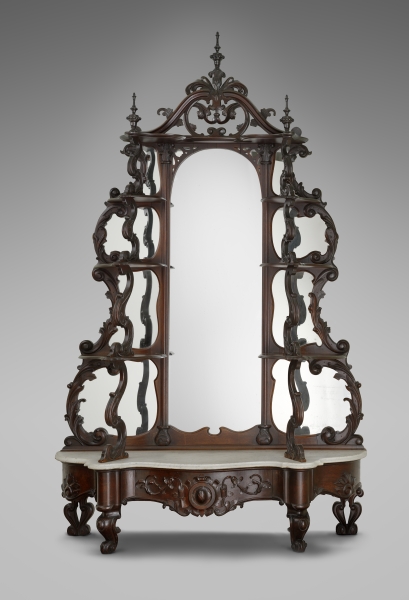
FIG. 7. Étagère, George Croome (1807–1879), Boston, 1861–65. Mahogany, rosewood, black walnut; h 104, w 62½, d 20. Museum of Fine Arts, Boston; H. E. Bolles Fund (1977.753).
Along with popular magazines, advice books on home interiors and furnishings aimed at shoppers—not makers—took on great importance. One of the single most influential American publications of the nineteenth century, across many disciplines, was Andrew Jackson Downing’s seminal work, The Architecture of Country Houses. Downing was a horticulturalist and America’s first landscape architect, who influenced the later careers of Calvert Vaux and Frederick Law Olmsted. Country Houses was first published in 1850 and had appeared in nine editions by 1866. More than a design book or pattern book, it offered theory, advice, commentary, and illustrations related to landscapes, houses, furniture, and even minute details such as the dimensions of chimney flues and the decoration of window blinds. In an authoritative voice, Downing prescribed for consumers the particulars necessary to achieve “correct taste” in the furnishings of each room.10
Downing’s book was important and influential not because it was wholly original, but because it compiled and united the work of the most up-to-date and reform-minded writers and designers of the day. Many plates illustrating furniture were taken from existing design sources (such as John Claudius Loudon’s 1834 publication Encyclopedia of Cottage and Villa Architecture and Furniture), and many of the architectural illustrations were original designs in picturesque revival styles by Downing’s collaborator, the architect Alexander Jackson Davis. The wide circulation of Country Houses, through its many editions, ensured its direct influence on interior furnishings. For example, one of Davis’s interior design renderings—the Gothic revival drawing room at Kenwood (near Albany, New York)—inspired imitation by several furnituremakers.11 At least half a dozen surviving Gothic revival center tables were closely modeled on a table in Davis’s drawings, although each example varies significantly in scale and details, suggesting that makers interpreted the design from the small, indistinct image in this popular and influential book.12
Along with illustrating new designs, Downing also reviewed furnishings available from American furnituremakers and retailers. With his characteristically firm editorial opinion, he provided specific endorsements, detailing the particular finishes on the furniture and the street addresses of manufacturers’ showrooms. He singled out for praise the sets of bedroom furniture made by Edward Hennessey at 49 and 51 Brattle Street in Boston, illustrating over a dozen products by this firm. Attesting to the wide reach of Boston goods, Downing wrote of Hennessey that “Mr. H’s prices are so moderate, and the design and finish of the articles so good, that his reputation is an extended one, and he supplies orders from various parts of the Union and West Indies. This furniture is remarkable for its combination of lightness and strength, and its essentially cottage-like character.”13 The Rotch family of New Bedford, Connecticut, evidently heeded Downing’s advice: a painted table in the Gothic revival style is part of a large set of bedroom furniture believed to have been made by Hennessey and Co.; according to family tradition, it was further decorated with floral motifs by Annie Bigelow Lawrence at the time of her marriage to Benjamin Smith Rotch in 1846.14 The Rotch family suite of furnishings, painted beige with gold striping and details, perfectly represents Downing’s recommendation for practical, inexpensive cottage furniture.
For useful and up-to-date improvements on a familiar form, Downing illustrated and recommended a dining table patented by Boston furnituremaker Cornelius Briggs, who operated one of the largest furnituremaking shops in Boston during the first half of the nineteenth century (fig. 8). In 1843, Briggs patented designs for his “new and useful Improvements in Extension-Tables.” Although he was by no means the first to make extension tables, he was among the first to patent his design improvements.15 His ingenious invention allowed one person to retract the ends with a mechanism concealed under the mahogany top (figs. 9, 10). Downing prominently endorsed the design, writing that “Briggs’s newly invented extension dining-table is more easily managed and cheaper than the common form. It closes with the aid of a small windlass; there is a leg in the centre which supports the additional leaves when extended, and is received in a hollow space in the solid column of the table; the whole appears like an ordinary circular centre-table when shut up.”16
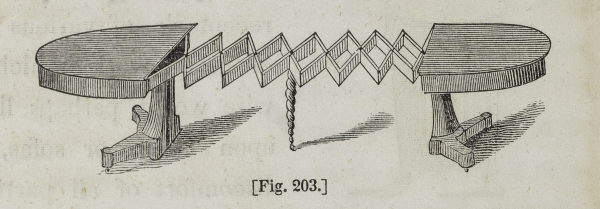
FIG. 8. Cornelius Briggs’s extension dining table. From A. J. Downing, The Architecture of Country Houses (New York: D. Appleton; Philadelphia: Geo. S. Appleton, 1850), 421. Winterthur Library; Printed Books and Periodicals Collection.
FIG. 9. Extension table, Cornelius Briggs (1787–1848), Boston, 1843–45. Mahogany, mahogany veneer, chestnut; h 28¾, w closed 42. Museum of Fine Arts, Boston; Museum purchase with funds donated by Shirley and Walter Amory and Mr. and Mrs. Ulf B. Heide (2007.338).
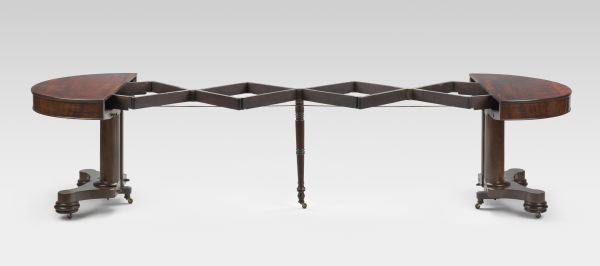
FIG. 10. Table in fig. 9 fully extended to a width of 127 inches.
It is possible that Briggs came to Downing’s attention after earning medals and favorable notice through one of the most important new forms of social media in the nineteenth century: the trade exhibition. In Boston, the Massachusetts Charitable Mechanic Association (MCMA), an organization of tradesmen and artisans founded in 1795 (with silversmith Paul Revere as its first president), presented influential exhibitions every two to three years beginning in 1837. Noting the success of similar trade fairs in New York and Philadelphia, the organizers wrote in the circular announcing the first exhibition that “it is believed that a Fair held in the capital of Massachusetts, in the very ‘heart of New England,’ and in the midst of innumerable manufacturing establishments, will be equally successful, popular, and advantageous.”17 Their prediction proved true: the 1837 exhibition was visited by over 70,000 persons in twelve days, during which they viewed approximately 15,000 articles on display.18
Briggs seems to have been an early adopter of this new social medium. Compared to other Boston furnituremakers who were reluctant to participate in the early years of the association’s fairs, Briggs appears to have chosen, cannily, when and how to exhibit his products to increase the likelihood of winning medals and the favorable notice that accompanied them. In 1844, Briggs showed his newly patented extension dining table at the fourth MCMA exhibition, where the judges awarded it a silver medal, noting: “This Table is on an improved plan, made of very rich wood, and of good workmanship. We consider it the best specimen of Cabinet Furniture in the Exhibition.”19
At the next exhibition in 1847, Briggs again displayed the extension table, with the judges deciding that it was “very convenient for common use, and may be made at a high or low price, to suit purchasers.” By then, the table was selling well, for Briggs was offering it in a range of finishes and prices; he must have known when he returned his successful product to the exhibition that it would be noted as a past medal winner. Since the judges would not award the same design a second time, Briggs also brought to his 1847 display “an entirely original invention” sure to catch their eye: the “Steamboat Sofa.” This rather outlandish contraption seems designed to stand out from the array of ordinary bedsteads and rocking chairs exhibited by other tradesmen. It combined “in addition to a Cabin Table, a pair of Sofas, to answer the purpose of Seats to the Table, and Couches as substitutes for Berths, as occasion may require.” Remarkably, the judges found this design “so simple, that it may be managed as easily as the opening and shutting of a common house door, and worthy of such encouragement as the Executive Committee may see fit to bestow.”20 Not one to miss an opportunity for additional honors, Briggs returned in 1850 with a rosewood version of the extension dining table that he had altered by making “the most important part of the sliding frame of iron, which is a decided improvement.” This small upgrade enabled him to earn yet another medal.21
Briggs stood out from his peers; it took several years for other Boston furniture producers to take full advantage of the publicity and exposure available from MCMA exhibitions. In the early years of the fairs, according to the judges’ reports, the furniture section was notably weaker than other areas. Furnituremakers avoided showing their work in such a public arena for fear of having their designs copied. In 1839, reporting on the Cabinet Work section of the second MCMA fair, the judges expressed their “regret that so few specimens of this useful and ornamental branch of manufacture were offered for their examination. Many of our best Cabinet makers are averse to public exhibitions of their skill, from a fear that others may see and profit by their ingenuity and taste. This the Committee deem a narrow prejudice, which they trust will soon be removed.”22 From the 1830s to the 1850s, the judges used an astute combination of encouragement, criticism, and selective praise to spur reluctant furnituremakers to greater participation and better displays. They expressed hope that “mechanics of every class” would see “how much light they can diffuse amongst their fellow tradesmen, instead of confining their talents within their own workshops.”23 In 1844, the judges again noted with disappointment that cabinet furniture was among the branches of industry “not so fully represented as they had reason to anticipate.”24 Briggs’s extension dining table and Jonas Chickering’s piano cases were noted as exceptions to the poor-quality furniture on view and were the only two medal winners in this category, out of 148 silver medals awarded at the fair.25
Once again the judges urged furniture producers to make use of these public spectacles, issuing the following exhortation: “How great is the advantage here afforded to the Inventor, or Improver, above every other mode of making known his discoveries.”26 Gradually, Boston furnituremakers responded. In each subsequent year, the number of entries in the Cabinet Work section increased, as did the proportion of medals. In 1847, cabinetmakers earned only eleven silver medals out of 171 awarded. In 1850, the judges observed that the displays in the furniture category “far exceed those of any previous Exhibition. With such an elaborate display of taste, elegance, and ingenuity, the duty of the Judges was that of pleasure.”27 At least one Boston firm mentioned its MCMA awards in its paid advertising; Pettingill & Pear advertised Howe’s Patent Rocker-Pivot Spring Beds with the proud comment: “This Spring Bed received the highest premium at the last Mechanics’ Fair held in this city.”28 From the 1850s onward, Boston furnituremakers found that trade exhibitions allowed them to earn third-party endorsements from expert critics and to show their work to large crowds of potential customers. These makers likely concluded that the risk of competitors’ copying their work was outweighed by the value of burnishing their reputations through the social media system of the day.
Boston’s MCMA exhibitions were social and community events on a grand scale, bringing together tens of thousands of visitors to view, discuss, and learn from the thousands of new inventions and practical objects on display. From the first, the city of Boston granted free use of Faneuil Hall and Quincy Hall for the event, and the two buildings were connected “by a strong, light, and airy self-sustaining bridge” to allow crowds to circulate. The bridge itself was built by a member of the association and awarded a gold medal, and it was treated as one of the wonders of the exhibition.29 A broadside from September 1844 shows the bridge and the busy, jostling crowd gathered below (fig. 11).
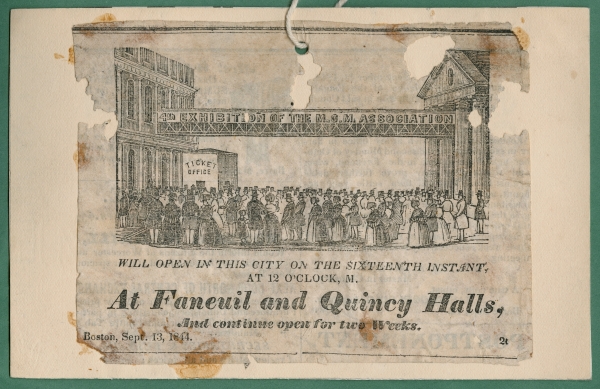
FIG. 11. Faneuil and Quincy Halls with Massachusetts Charitable Mechanic Association bridge, Boston, September 13, 1844. From Scrapbook 1801–74, Massachusetts Charitable Mechanic Association records, Massachusetts Historical Society.
The size of the crowd at each exhibition was truly staggering in relation to Boston’s size. The city’s population in the 1840 census was 93,383, and in 1844 some 70,000 visitors attended the fair during its three-week run. Boston’s population reached 136,881 in the 1850 census, and attendance at the 1853 exhibition was estimated at 150,000. As organizers observed in 1844: “The placing in one view the combined productions of the skill of the inventive mind as applied to the Arts . . . together with the almost endless variety of new appliances adopted in numerous manufactories . . . all tending to the progress of the Arts, forms one of the most pleasing spectacles that can be conceived, one which never fails to attract the notice of thousands of our countrymen who crowd the Halls from the opening to the close of each day’s Exhibition.”30
The sense of “spectacle” was indeed accurate. As the fairs grew in size and attendance—with tens of thousands of visitors traveling to the city for the event—the related festivities added to the sense of communal celebration. The managers of the Fifth Exhibition, in 1847, announced a display of fireworks on Boston Common, staged as a competition between rival pyrotechnical artists Mr. John Turrell of Fort Washington, New York, and Mr. James G. Hovey of Boston, and accompanied by the Brigade Band.31 A later commenter described the scene during MCMA fairs and compared the festivities to Independence Day, Thanksgiving, and Christmas because of the throngs of visitors from the countryside who descended on the city.32
Visitation at such exhibitions was boosted by ongoing improvements in transportation. In 1851, U.S. president Millard Fillmore presided over three days of festivities known as the Great Boston Railroad Jubilee, celebrating the completion of railway lines linking Boston with Montreal and the western United States. The railway was hailed by Boston’s leaders and Whig politicians as a way to unite a divided nation through technology, expanded commerce, and industrial development. The Reverend Ezra Stiles Gannett preached a sermon on the occasion in which he said of the railroad: “Nothing will tend more directly to break down that sectional jealousy, which unless checked, may grow into permanent ill-will. Our Union finds a strong support in the exchange of commodities, and one still more effectual in the exchange of visits.”33 Such themes of exchange, innovation, and national progress echoed the rhetoric and goals of the organizers of the MCMA fairs, as well as other national and international exhibitions in which Boston furnituremakers participated.
One maker who received favorable notices in the MCMA exhibitions of the 1850s, and then went on to win even wider acclaim for his furniture at international exhibitions in New York and abroad, was Augustus Eliaers. Born in France, Eliaers first appears in the Boston directory in 1849 and remained active in the city until 1865, when he returned to Paris. Having arrived in Boston as a trained cabinetmaker, Eliaers took a silver medal at the 1850 MCMA fair for “One Rosewood Siamese Chair Frame” (presumably a tête-à-tête form), which the judges praised as “one of the best made articles in the Exhibition.”34 Throughout his career in the United States, Eliaers took advantage of exhibitions to showcase his work, broaden his market reach, and enhance the value of his advertising.
While consistently showing his work at MCMA fairs in Boston during the 1850s, Eliaers ambitiously sought a grander stage. The works he exhibited at the New York Crystal Palace exhibition in 1853 (modeled on the Great Exhibition at the Crystal Palace in London two years earlier) showcased his considerable artistic and technical skills before an international audience of more than 1.1 million. Among the several pieces he showed, an elaborate sideboard—presumably his answer to the prize-winning sideboard displayed by French cabinetmaker A. G. Fourdinois in London in 1851—was selected for illustration in the official exhibition catalogue, accompanied by text describing its elaborate carving with motifs of agriculture and hunting (fig. 12).35 That the sideboard was created to generate publicity rather than as a salable piece of merchandise is indicated by this hulking and expensive object still being displayed in Eliaers’s shop five years later, when Ballou’s Pictorial wrote a profile of the cabinetmaker:
The buffet is of solid black walnut, for a large dining hall. It is in the Renaissance style . . . the Mode justly usurping the place of the frail furniture which preceded it . . . and will last for centuries. It costs $3000 and employed 14 men six months (dimensions: 12 ft. high, 11 ft. 3 in. breadth). The carvings are beautifully executed from models made by M. Eliaers from actual game, fish, fruit, etc. . . . It is a monument of artistic and mechanical skill, and industry, harmonizing the useful and the ornamental in a remarkable manner.36
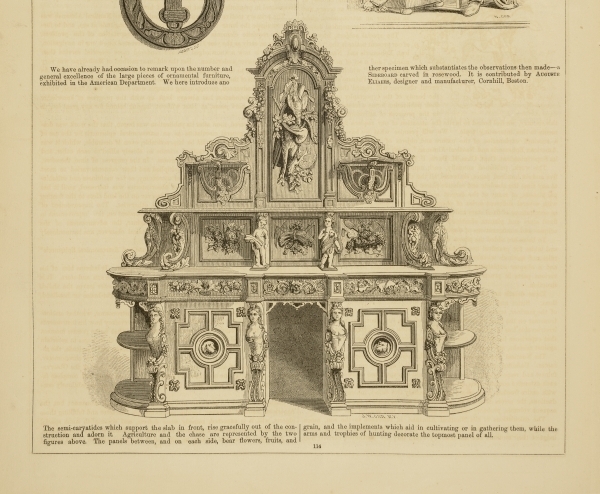
FIG. 12. Augustus Eliaers’s sideboard. From B. Silliman Jr. and C. R. Goodrich, eds., The World of Science, Art, and Industry: Illustrated from Examples in the New-York Exhibition, 1853–54 (New York: G. P. Putnam, 1854), 114. Winterthur Library; Printed Books and Periodicals Collection.
As the grand sideboard stimulated commentary at the Crystal Palace exhibition and in illustrated publications, it no doubt built interest in Eliaers’s range of more salable products shown at other exhibitions and in his own advertisements. In 1853, the same year he displayed the monumental sideboard in New York, Eliaers secured two patents for new designs, one for a library step-chair and one for a recumbent lounge, both of which he exhibited with other sofas and chairs (with his partner James G. Blake) at that year’s MCMA fair. A miniature adjustable sofa that bears Eliaers’s mark and patent stamp, now in a private collection, may have been among the new forms of seating furniture he developed around this date; each arm can recline to a 45-degree angle when the user releases a brass catch at the back.37 The miniature sofa is larger and more finely finished than a patent model, and it may have been made as a demonstration piece for exhibitions. In 1853, MCMA judges awarded a diploma to Eliaers’s recumbent chair and noted that “all the articles of this contribution are carefully made; the Recumbent Chair especially, it being a simple and good principle, and uncommonly comfortable. . . . The Library Step Chair has always been considered an ingenious contrivance.”38 After their debut at this exhibition, the library step-chair, the recumbent chairs and sofas, and a portfolio and music stand (patented in 1857) were regularly illustrated in Eliaers’s advertisements in New York and Boston into the early 1860s.39 Although these indicated that he offered a full range of furnishings, upholstery, and interior decorating services, Eliaers seems to have focused on illustrating and describing his exhibited designs. He likely understood that the furniture he showed in the public and social setting of exhibitions, which had been praised by judges and journalists, would be especially memorable and interesting to customers.
Another of Eliaers’s showpieces was a staircase model for which he won an award at the New York Crystal Palace exhibition of 1853. Eliaers seems to have made something of a specialty of this type of work: he called himself a “stair builder” in the Boston City Directory as early as 1852 as well as when he joined the MCMA in 1853, and he acquired a patent for staircase construction in 1857. In one of his advertisements from the 1854–59 period, he described himself as a “French Cabinet Maker,” with an illustration of a French rococo revival parlor, but included an image of an elaborate helix-shaped double staircase.40 Not every homeowner had need of a double staircase; the library step-chair, today Eliaers’s best-known design, was a more modest and practical set of steps that he exhibited, advertised, and sold widely.
In 1853, Eliaers submitted a small model, a drawing, and a description for “a library step-chair, or a chair which may be changed at pleasure into a flight of steps,” to the United States Patent Office (fig. 13).41 The model, with its original handwritten tag, shows the mechanical operation in a simple, unornamented manner.42 Eliaers did not originate the concept of a chair that could be converted into a set of steps—a handful of designs for such metamorphic library steps had been published in the late eighteenth and early nineteenth centuries—but he patented an improvement to the placement of the hinge, “permitting the seat to be so stuffed as to form an ornamental and comfortable chair.”43 In 1858, Ballou’s Pictorial Magazine wrote that Eliaers’s “library chair is a solid, elegant, and comfortable seat which, by a single instantaneous reverse movement, becomes a flight of steps by which the highest shelf of a library may be reached. These transformations do not injure the elegance or the solidity of the furniture, and the machinery by which they are produced is perfectly simple, works like magic, and is not at all liable to get out of order.”44
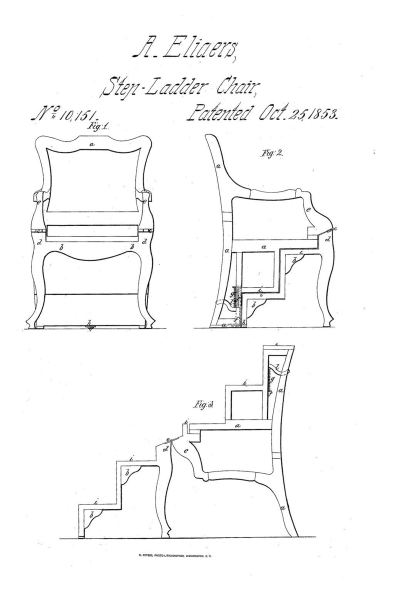
FIG. 13. Library step-chair patent drawing (as “Step-Ladder Chair”), Augustus Eliaers (active 1849–65). U.S. Patent 10,151, issued October 25, 1853, United States Patent and Trademark Office, Washington, D.C.
The library step-chair reveals both the artistic creativity of the carver as well as the spirit of mechanical progress and novelty that characterized mid-nineteenth-century furniture. Several of the full-scale chairs produced from this patent are known today, with varied carved details that demonstrate how Eliaers adapted the basic model to the changing and eclectic fashions of the period. One example at the Museum of Fine Arts, Boston, features Renaissance-style grotesque heads atop the crest rail (figs. 14, 15), while another in the same collection has classical male and female heads in the same positions.45 Another example at the Brooklyn Museum features carved profile heads representing the politicians Daniel Webster and Henry Clay, U.S. senators with opposing views on slavery who both died in 1852, the year before Eliaers patented his design.46 Possibly made as a commemorative object for an exhibition, the Webster–Clay chair, along with the other distinctively hand-carved examples, indicates the relationship between Eliaers’s ordinary merchandise and his exhibition pieces: by tweaking a few ornamental details, he could make a standard chair into a novel product relevant to contemporary events, one that was more likely to attract notice from exhibition visitors.
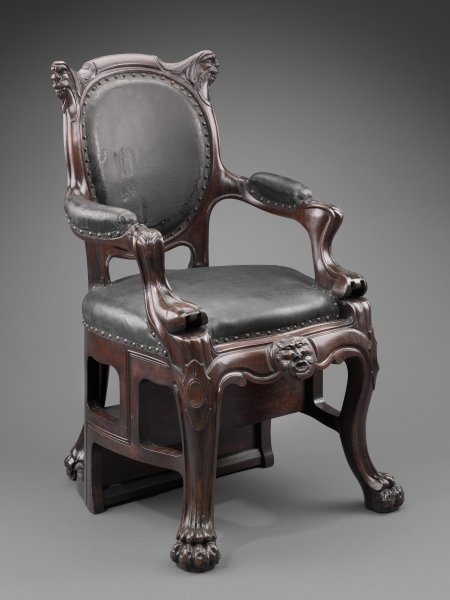
FIG. 14. Library step-chair, Augustus Eliaers, Boston, 1854–60. Mahogany, oak; h 37⅜, w 24½, d 25. Museum of Fine Arts, Boston; H. E. Bolles Fund (1974.320).
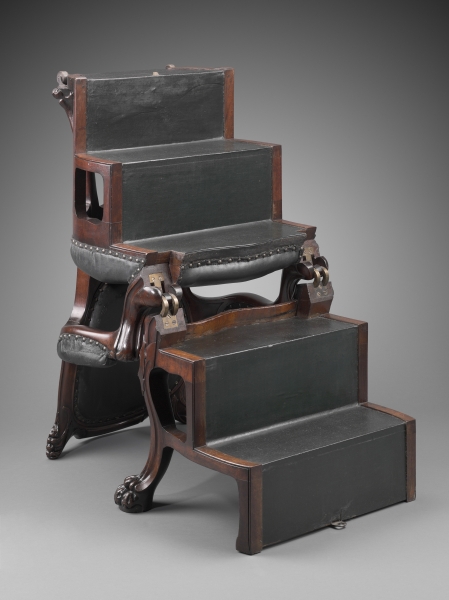
FIG. 15. Library step-chair in fig. 14 converted to library steps.
Eliaers exemplifies how Boston furnituremakers learned to make the most of public exposure through social media. He showed elaborate and unusual furniture at exhibitions to attract notice in publications and win awards from judges; he illustrated his exhibition pieces in his advertising; he patented designs so that he alone could exhibit and sell them; and he advanced his work ever more ambitiously in an international setting. After leaving Boston for Paris in 1865, he went on to exhibit his furniture at the 1867 Paris Exhibition, the 1868 Exposition maritime internationale du Havre, the 1873 Vienna World Exposition, and the 1876 Centennial Exposition in Philadelphia.47 Perhaps as much as any furnituremaker active in Boston in the years before the Civil War, Eliaers seems to have mastered and exploited the interplay between various forms of media and social experiences.
Innovation in manufacturing of all kinds of household goods, including furniture, paralleled the rise of new forms of mass communication and social experiences that changed how Boston furnituremakers made and marketed their products. Popular magazines, nationally distributed advice literature, and regional and international exhibitions formed a public arena in which consumers were exposed to new furniture designs in an increasingly social environment. Buyers no longer needed to visit a cabinetmaker’s shop or showroom to learn about goods; they might rely on an advice column in a magazine, or illustrations in a book, or the comments of critics on works displayed at the latest mechanics’ fair. Exhibitions promoting technological advances in manufacturing, heightened by a strong sense of communal celebration and spectacle, increasingly linked economic activities with social experiences. In the decades before the Civil War, Boston cabinetmakers like Cornelius Briggs and Augustus Eliaers learned to navigate this new environment by emphasizing novelty and ingenuity to garner attention and critical praise.

1. For an overview, see Jan M. Seidler, “A Tradition in Transition: The Boston Furniture Industry, 1840–1880,” Nineteenth Century 82, nos. 3–4 (1982): 76–84.
2. Barbara McLean Ward, “Marketing and Competitive Innovation: Brands, Marks, and Labels Found on Federal-Period Furniture,” in Everyday Life in the Early Republic, ed. Catherine E. Hutchins (Winterthur, Del.: Henry Francis du Pont Winterthur Museum, 1995), 201–18.
3. Tom Standage, Writing on the Wall: Social Media—The First 2000 Years (New York: Bloomsbury, 2013), 3.
4. Alfred Pairpont to R. Gleason and Sons, London, July 31, 1866; a copy of this letter is in the Roswell Gleason Period Rooms research binders, Art of the Americas Department, Museum of Fine Arts, Boston (hereafter MFA).
5. Alice B. Neal, “Any Time,” Godey’s Magazine and Lady’s Book 49 (July–Dec. 1854): 30–34.
6. “New Furniture,” Godey’s Lady’s Book 40 (Feb. 1850): 152.
7. Ibid.
8. George Croome, obituary, in Benjamin and William R. Cutter, History of the Town of Arlington, Massachusetts (Boston: David Clapp & Son, 1880), 210.
9. The Potomack Company (Alexandria, Va.), sale 37, Feb. 11, 2012, lot 122, accessed on Apr. 26, 2014 from www.potomackcompany.com/asp/archivesearch.asp.
10. Andrew Jackson Downing, The Architecture of Country Houses (1850; reprint, New York: Dover Publications, 1969), 408.
11. Ibid., 384–85, fig. 179.
12. One example of this table is in the collection of the MFA (1981.402). Published examples of several versions are in the object file for 1981.402, Art of the Americas department, MFA.
13. Downing, Country Houses, 415.
14. Gerald W. R. Ward, The Cabinetmaker and the Carver: Boston Furniture from Private Collections (Boston: Massachusetts Historical Society, 2013), 49. Downing illustrated and described the Rotch house in New Bedford, Mass., in Country Houses (295–98) and dedicated the book to Annie Rotch’s uncle Henry Winthrop Sargent.
15. Dennis Carr and Derin Bray, “The Ingenious Patent Extension Tables of Cornelius Briggs,” Antiques and Fine Art 10, no. 2 (Spring 2010): 202–5. Historic New England owns a convertible sofa-table patented in 1847 by his sons, C. C. and J. Briggs (1967.110).
16. Downing, Country Houses, 421.
17. Circular for the First Annual Fair and Exhibition for Premiums of the Massachusetts Charitable Mechanic Association (hereafter MCMA), Scrapbook 1801–74, MCMA records, Series IV, A, Vol. 7, Massachusetts Historical Society, Boston (hereafter MHS).
18. Circular for the Second Annual Fair and Exhibition, Scrapbook 1801–74, MCMA records, Series IV, A, Vol. 7, MHS.
19. The Fourth Exhibition of the Massachusetts Charitable Mechanics Association at Quincy Hall in the City of Boston, September 16, 1844 (Boston: Crocker and Brewster, 1844), 61, MCMA records, MHS.
20. The Fifth Exhibition of the Massachusetts Charitable Mechanics Association at Faneuil and Quincy Halls in the City of Boston, September, 1847 (Boston: Dutton and Wentworth, 1848), 131–32, MCMA records, MHS.
21. The Sixth Exhibition of the Massachusetts Charitable Mechanics Association at Faneuil and Quincy Halls in the City of Boston, September, 1850 (Boston: Eastburn’s Press, 1850), 87, MCMA records, MHS.
22. The Second Exhibition of the Massachusetts Charitable Mechanics Association at Quincy Hall in the City of Boston (Boston: Isaac R. Butts, 1839), 47, MCMA records, MHS.
23. Ibid.
24. Fourth Exhibition, 1844, 5.
25. Ibid.
26. Fifth Exhibition, 1847, v–vi.
27. Sixth Exhibition, 1850, 83–84.
28. Advertisement for Pettingill & Pear, Brattle St., Boston, in Boston City Directory (1861).
29. Fourth Exhibition, 1844, 4.
30. Circular for the Fourth Exhibition, Scrapbook 1801–74, MCMA records, Series IV, A, Vol. 7, MHS.
31. This lively event was treated to a three-page description in the annual report; Fifth Exhibition, 1847, 190–92, MCMA records, MHS.
32. Circular for Twelfth Exhibition, Scrapbook 1801–74, MCMA records, Series IV, A, Vol. 7, MHS.
33. Michael J. Connolly, “The Correction of Our Political Philosophy: New England Whigs and the 1851 Boston Railroad Jubilee,” New England Quarterly 79, no. 2 (June 2006): 202–26; Rev. Ezra Stiles Gannett quoted on 215. For an image showing the pageantry of the jubilee, see a painting by William Sharp titled Railroad Jubilee on Boston Common in the collection of the MFA (48.475).
34. Sixth Exhibition, 1850, 87.
35. For the Fourdinois sideboard and related examples, see Kenneth L. Ames, Death in the Dining Room and Other Tales of Victorian Culture (Philadelphia: Temple University Press, 1992), 7; for Eliaers’s sideboard in the New York Crystal Palace exhibition, see fig. 12.
36. Ballou’s Pictorial Magazine 15, no. 10 (Sept. 4, 1858): 148.
37. Ward, The Cabinetmaker and the Carver, 52–53.
38. The Seventh Exhibition of the Massachusetts Charitable Mechanics Association at Faneuil and Quincy Halls in the City of Boston (Boston: Press of Daniel Moore and George Coolidge, 1853), 48.
39. Advertisement by dealer Pierre Hardy, of 625 Broadway, New York, in Norton’s Literary Letter, Comprising the Bibliography of the State of New Hampshire, and Other Papers of Interest; Together with a Catalogue of a Large Collection of Works Upon Bibliography and America (New York: C. B. Norton, 1860), as referenced by Barry R. Harwood, “The French Connection: Auguste Eliaers’ Activity in Boston 1849–1865” (unpublished text of lecture delivered Oct. 23, 2012, research file for Eliaers, Art of the Americas department, MFA). Eliaers placed advertisements in the late 1850s and early 1860s in the Boston Saturday Evening Gazette, the Boston Almanac, and the Boston City Directory.
40. I am indebted to Barry Harwood and his unpublished lecture notes for the information on Eliaers’s staircase building, which include a copy of the advertisement illustrating the double staircase. The reference to Eliaers as a “stair builder” when he joined the MCMA is found in the list of new members in the record of the Quarterly Meeting of Oct. 5, 1853, MCMA records, Series IV, A, Vol. 7, Scrapbook 1801–1874, MHS.
41. Augustus Eliaers, U.S. Patent Application, Specification of Letters Patent No. 10,151, filed Oct. 25, 1853.
42. The patent model is in the MFA (1977.336).
43. Eliaers, U.S. Patent Application.
44. Ballou’s Pictorial Magazine 15, no. 10 (Sept. 4, 1858): 148.
45. The chairs in the MFA are 1974.320 and 1976.762.
46. Barry Harwood, lecture notes. The chair in the Brooklyn Museum (2008.75) was acquired in 2008.
47. Harwood, lecture notes.

